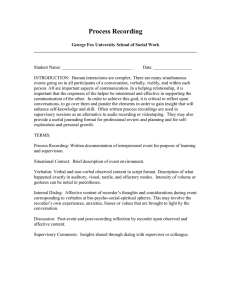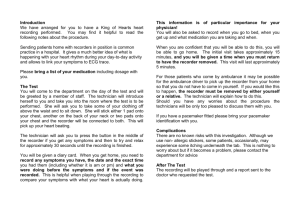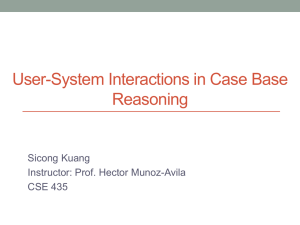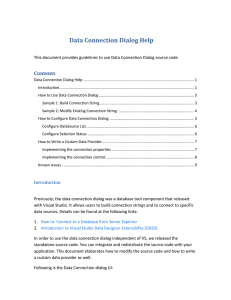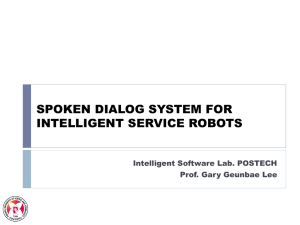Process Recordings - George Fox University
advertisement
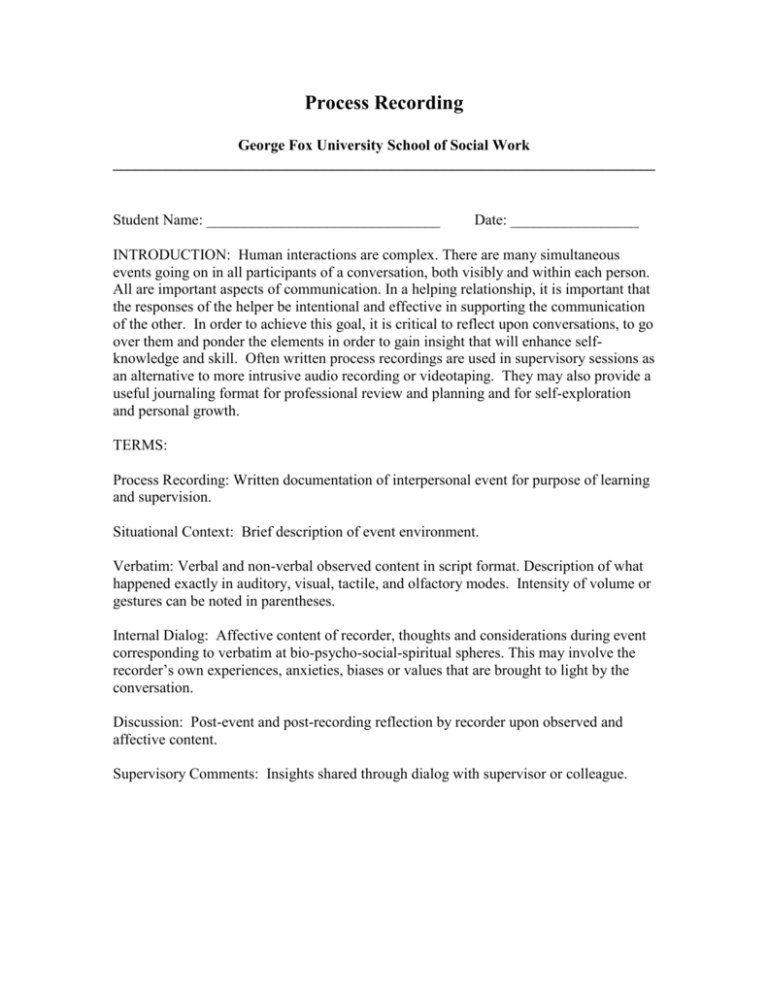
Process Recording George Fox University School of Social Work ________________________________________________________________________ Student Name: _______________________________ Date: _________________ INTRODUCTION: Human interactions are complex. There are many simultaneous events going on in all participants of a conversation, both visibly and within each person. All are important aspects of communication. In a helping relationship, it is important that the responses of the helper be intentional and effective in supporting the communication of the other. In order to achieve this goal, it is critical to reflect upon conversations, to go over them and ponder the elements in order to gain insight that will enhance selfknowledge and skill. Often written process recordings are used in supervisory sessions as an alternative to more intrusive audio recording or videotaping. They may also provide a useful journaling format for professional review and planning and for self-exploration and personal growth. TERMS: Process Recording: Written documentation of interpersonal event for purpose of learning and supervision. Situational Context: Brief description of event environment. Verbatim: Verbal and non-verbal observed content in script format. Description of what happened exactly in auditory, visual, tactile, and olfactory modes. Intensity of volume or gestures can be noted in parentheses. Internal Dialog: Affective content of recorder, thoughts and considerations during event corresponding to verbatim at bio-psycho-social-spiritual spheres. This may involve the recorder’s own experiences, anxieties, biases or values that are brought to light by the conversation. Discussion: Post-event and post-recording reflection by recorder upon observed and affective content. Supervisory Comments: Insights shared through dialog with supervisor or colleague. Situational Context: 1. Client’s identifying information (initials or different name, sex, age, etc.)– always protect confidentiality. 2. Identify persons present and roles of persons present at the session (include yourself). 3. The number of the session (e.g., 3rd contact with JC) 4. Briefly Describe Learning Situation: 5. Purpose of meeting/ goals being addressed: Verbal and Non-Verbal Dialog: Internal Dialog: Student Reflection: Supervisor Comments: Discussion: Supervisory Comments: Supervisor Signature: ______________________________ Date: ____________ Student Signature: _________________________________ Date: ____________
